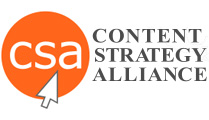
As 2019 draws to a close with popping champagne corks and New Year’s resolutions, inevitably thoughts turn towards new innovations, ideas, and concepts for the upcoming year. The world of content strategy is not any different in terms of understanding what and how new and emerging trends for 2020 will have an impact on the way content strategists will address strategy development and implementation.
Content is getting better because organizations and businesses are becoming savvy and smarter about how to leverage, research, create, and publish content. Content marketing and SEO will continue to be collaborative partners in the content strategy conversation. While an effective content strategy is not limited to organizational size, type, and or scope, it should be agile and flexible in the application of new and emerging trends to promote organizational alignment and drive businesses’ strategic goals.
The following trends are on pace to take a prominent place in content strategy plans:
- Niche content
- Video as storytelling
- Content for voice activation
- Content provider as thought leader.
Niche Content
Building from the past few years, content creation has become more useful, usable, and technologically engaging. It has also better aligned with user behaviors, preferences, and search needs. Content strategists will need to work across business units to align the various strategies into a cohesive and effective strategic plan, which will ensure that the right content gets to the right reader at the right time in the user journey. This will include working with the Marketing and User Research to determine the audience personas and their motivations. Conversations will center around what is the organization’s niche, what is the content that audiences will respond to. Content strategy will need to determine and facilitate a comprehensive approach for creating and maintaining niche content that is measured in interactions and engagements, instead of page per views. Niche content will make a greater impact for organizational branding and present an opportunity for audiences to gain access to information that cannot be found elsewhere, as well as enhancing SEO and cementing organizations as thought leaders.
Video as Storytelling
Research studies are forecasting that video will account for almost 80 percent of total Internet traffic by 2020. As more businesses and organizations use video content to foster engagement to educate and inform their audience base, visual storytelling in the format of video presents an opportunity to leverage interactions that written content is not able to do. This may take the form interviews with thought leaders and subject matter experts, live streaming of conferences, product launches, and Q&A sessions. There needs to be a concerted effort to include video in any content strategy and not be an afterthought. By working with the marketing and strategic communications business units to determine an editorial calendar or collaborating with the IT department to determine the best possible video management system to house video content. YouTube’s function is outreach and sharing, and not as an asset management system.
Content for Voice Activation
Any content strategy in 2020 will need to think about creating content for voice activation. It cannot be considered as optional or one of user experience. There has been an increase in smart speaker adoption in 2018. According to the Pew Research Center, in 2017, almost half of U.S. adults, 46 percent, stated that they used voice assistants to gain access to content via smartphones and other devices with voice activation on computers and tablets, increasing from 14 percent of users. Content strategists will need to understand how to structure content to leverage machine based learning and artificial intelligence, as well as focusing on how this may inform data analysis to power search engines and audience search queries to better understand and anticipate audience preferences and behaviors, as well as the context of what audiences want in relation to what tasks they are look to complete.
Content Provider as Thought Leader
Businesses and organizations may be lulled into complacency regarding their brand perception. Most often, content strategies underestimate to impact of trust and reputation. One of the trends that will shape content strategy in 2020, is thought leadership. In a Forbes article from 2019, audiences look to expertise, critical insight and ways to improve. It’s about offering information and encouraging engagement and feedback from the audience in a way that establishes trust. This could be the form of video content, live streaming, and real time interactions for conference proceedings, webinars, and product or service launches. Business units within the content strategy ecosystem will need on-going conversations to determine content longevity and the type of content that is helping to drive and meet the goals of both the audience and the organization.
The Future is Now
As 2020 comes into view, one of the primary challenges to content strategy will be working to mitigating the effects of the silos and territorial mindset among departments and business units. What is evident is that the world of content is becoming more integrated in terms of the application of emerging technologies, such as AI and machine learning. Content strategists are well positioned to build those cross channels to create an effective content strategy and demonstrate how emerging trends in content and success metrics may equip organization to better align with strategic goals and drivers, as well as more effectively collect and apply research and data analysis to inform content decisions which will help to bolster the content strategy.


